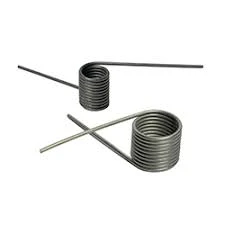
- Mobile Phone
- +8613931874955
- sales@cntcmetal.com
concrete welded wire fabric
Understanding Concrete Welded Wire Fabric A Crucial Component in Modern Construction
Concrete welded wire fabric (WWF) is a vital element in the construction industry, particularly for reinforcing concrete structures. This product consists of a grid of steel wires that are welded together at regular intervals, creating a robust mesh. It is widely used for various applications, including flooring, walls, and other concrete elements, due to its ability to improve the strength and durability of the material it reinforces.
One of the primary advantages of using concrete welded wire fabric is its capability to evenly distribute loads within a concrete slab
. This is crucial in scenarios where the concrete is subjected to heavy weights or dynamic impacts, such as in industrial settings or high-traffic areas. By evenly dispersing these loads, WWF helps prevent cracking and structural failure, extending the lifespan of the concrete installation.The production of welded wire fabric involves several processes. Initially, high-quality steel wires are drawn to specific diameters and then cut and arranged in a grid pattern. These wires are subsequently welded at their intersections using either electric or resistance welding techniques, ensuring a strong bond that can withstand significant tensile forces. The finished product is then available in various grades, wire diameters, and mesh sizes, catering to different structural and load requirements.
concrete welded wire fabric

Welded wire fabric offers several benefits over traditional reinforcing methods, such as rebar. First, it simplifies the installation process. Since the mesh comes in large sheets, it can be laid quickly and easily, reducing labor costs and saving time on construction sites. Additionally, the continuous nature of the fabric reduces the number of weak points in the reinforced concrete, providing a more uniform reinforcement compared to discrete rebar placements.
Another significant advantage of using WWF is its compatibility with various types of concrete. Whether it's standard concrete, high-performance concrete, or decorative concrete, welded wire fabric can be integrated seamlessly into the mix. This versatility makes it an ideal choice for both residential and commercial projects, ranging from foundations and basements to driveways, pavements, and precast elements.
Environmental considerations are also becoming increasingly important in construction, and WWF aligns well with these sustainability goals. The use of steel, which is recyclable, contributes to the longevity of concrete structures and minimizes waste. Moreover, by enhancing the structural integrity of concrete, WWF reduces the need for repairs and replacements, leading to a lower overall environmental impact over the life cycle of the building.
In conclusion, concrete welded wire fabric plays an essential role in modern construction, providing a reliable solution for reinforcing concrete structures. Its ease of installation, load distribution capabilities, and compatibility with various concrete types make it a preferred choice among builders and engineers. As the construction industry continues to evolve, adopting innovative materials and methods, the importance of welded wire fabric will likely grow, ensuring safer, more durable structures for the future. Understanding and utilizing WWF not only bolsters the integrity of construction projects but also aligns with a sustainable approach to building in today’s world.
share:
-
Why Sacrificial Formwork Is Redefining Underground ConstructionNewsJun.06,2025
-
The Structural Dynamics of Modern Concrete: How Snake Spacers Revolutionize Flexible ReinforcementNewsJun.06,2025
-
Snake Spacers Smart-Lock Concrete Reinforcement with Surgical PrecisionNewsJun.06,2025
-
Snake Spacers: Reinforcement Precision for Modern Concrete ProjectsNewsJun.06,2025
-
Snake Spacers Powering Concrete's Structural DNANewsJun.06,2025
-
Slither into Success: Snake Spacers' Precision Bite for Unbreakable ReinforcementNewsJun.06,2025
-
Sacrificial Formwork: Building Stronger, Faster, and Safer StructuresNewsJun.06,2025



















